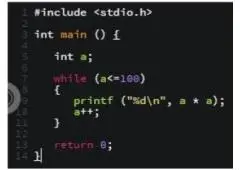Description
Query languages allow users to request and retrieve information from database and information systems. They work on user input of structured and formal programming command based queries to search and extract data from host databases.
These query languages can be declarative or imperative. The latter type of language gives broad instructions on how to complete a task, while the former lets you specify what is to be done and leaves the details to the engine underneath.
Traditionally, query languages have either been powerful and expressive but not easily readable or writable by non-experts (e.g. SQL) or simple and intuitive but not powerful enough to express complex concepts (e.g., XQuery). CQL is designed to bridge this gap by making it easy for experts to write queries while being usable by non-experts. For example, imagine that you ask your children to make their beds. Duncan will take one approach while Isabel will take another.
Data Definition Language
DDL is a computer language that creates and modifies the structure of objects in a database using predefined commands and specific syntax. These commands define the different structures and objects present in a database like tables, indexes and schemas. It also specifies the storage groups, or stogroups, which hold physical table and index files for each object.
DDL commands can be used to add, modify or delete database objects and change their locations within the database. These are different from the Data Manipulation Language (DML) commands that alter actual data stored in database tables. Delve into the realm of Programming question-answer - Click here to access the website and find expert solutions.
A database management system uses a set of DDL statements to build and maintain databases for users. These DDL commands include CREATE, ALTER and DROP. They can be used to create tables, columns and stored procedures. The system can also use them to define the relationships between these structures and their logical names. It can then construct a data view based on this information.
Data Manipulation Language
The data manipulation language is a sublanguage of SQL that deals with inserting, changing and deleting information in a database. It is also known as CRUD. Most SQL commands are part of this language. It is a rather simple language and only requires one or two words to start the command. The command names are easy to understand as well, such as INSERT, UPDATE and DELETE.
Manipulating data helps you cleanse, organize and restructure it to make it readable and useful. It also allows you to project future trends and provide more in-depth analysis for your business. Data manipulation is an essential tool for companies to stay competitive and keep their records consistent and organised. It also helps eliminate redundancies in reporting. The process can be tailored to meet your business focuses and address any changes in market demands. It can be divided into procedural and nonprocedural coding with the former requiring you to specify what data you require and how to reach it while the latter is easier to work on.
Data Access Language
SQL is a general purpose language that provides the basis for data access and manipulation. The SELECT statement allows you to retrieve data from existing schema objects in the database. The INSERT statement inserts new data into existing tables. The SET statement updates the value of a column or row.
When you run a query, you may want to sort the results. You can use the ORDER BY clause to specify which fields you want to sort on, and in what order.
The data access language (DAL) is the layer of software that sits between the business logic layer and the data storage system. The DAL is responsible for interacting with the data storage system to retrieve and transform the queried information into a format that can be used by the business logic layer. Some common data access languages include PL/SQL, SQL/XML and ODBC. Apple's DAL is an early SQL-like language and application programming interface that provided unified client/server access to database systems.













